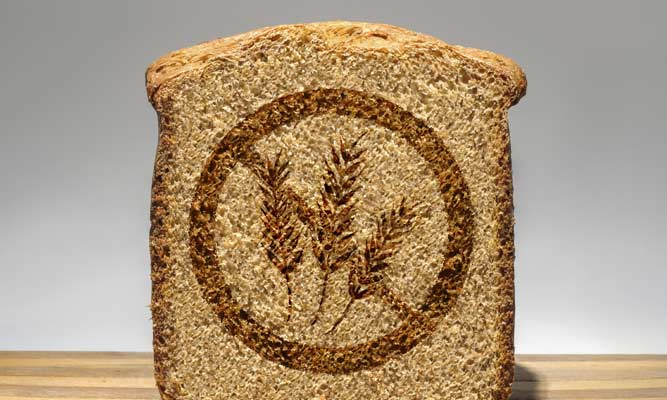Am I Gluten Intolerant?

Gluten is a protein contained in wheat, barley, and rye. It gives a doughy/elastic consistency to flours derived from these grains. This is why, over the centuries, gluten-containing grains have come to be used so extensively in breads and other baked goods. Today, gluten is used in many processed and pre-made foods. Though there may be no detectable symptoms of the immune response to gluten, the typical symptoms people develop occur when the reaction begins to damage the intestines.
The symptoms of gluten sensitivity are varied and can sometimes seem unrelated. Because of this, some people may not suspect that gluten is what's making them feel bad. The gluten-free diet is used to treat people with celiac disease and those with non-celiac gluten intolerance.
It is important to pay attention to is how you feel after consuming various foods. While eating a vegetable salad or piece of fruit may not affect you, the bloating and nausea you feel after that sandwich on wheat bread or slice of pizza might be telling you something. Usually, people start to see a pattern if they are careful about keeping track of their diet.
I remember the first time I noticed my gluten intolerance. I ate a bagel and I became bloated and I began to experience severe itching. These symptoms showed up every time I ate bread or pasta. I originally thought that wheat was the culprit. After some research I discovered that barley and rye cause the same symptoms because they also contain gluten.
The following are the top ten indications that you might be sensitive to gluten:
Do you experience any of these symptoms three times per week or more?
1. Gastrointestinal issues:
(Such as: stomach pain or bloating, gas and/or cramps, nausea, vomiting, constipation, diarrhea, acid reflux (GERD), heartburn, irritable bowel syndrome).
2. Skin lesions
3. Constant fatigue
4. Frequent headaches or migraines
5. Itching skin
6. Sinus Congestion
7. Weight gain
8. Canker sores
9. Brain fog
10. Dizziness
The process to do a self-check isn't perfect, but it can give you a lot of valuable information. It's a matter of total gluten elimination from your diet and a sudden reintegration (if needed). For this to work, you have to do it perfectly. You can't cheat or just have a little. Ideally, you'd get yourself completely gluten free for 2-3 weeks. You may notice enough benefit and be sold from just the elimination without the need for the reintegration test. If not, try a slice of pizza or one of your old favorites a few weeks later and see if your symptoms come back quickly.
There are also gluten allergy/celiac sensitivity tests that are available through Cyrex Labs, Labcorp and Quest Diagnostics. With any gluten sensitivity test, you must be eating gluten before the test to get an accurate result. This will help identify various forms of allergies or sensitivity to gluten or wheat if you're wanting a more definitive test.
When it comes to switching to a gluten-free diet, it can seem like a big change at first. After a while, rest assured, you will get used to it and you will no longer crave gluten-containing foods. You may initially feel deprived by the diet's restrictions, especially if you weren't having troubling symptoms before your diagnosis. Over time, you will discover that there are so many noticable benefits and delicious foods you can eat instead. If you feel the need to eat some bread or pasta, you will be pleasantly surprised to realize how many gluten-free products are now available that taste just as good as their counterparts. Most grocery stores and online retailers have a good selection of gluten-free foods these days so it's much easier to go gluten free than in years past.
If you're just starting with a gluten-free diet, it can be a bit overwhelming at first. It's always a good idea to consult a nutritionist (like me) who can answer your questions and offer advice about how to best avoid gluten while still eating a delicious and healthy diet. I can be reached on Wellness.com, right here. Also my book called The Gluten-Free Edge: Get Skinny the Gluten-Free Way! is available on Amazon.
Thanks for your comments below. ~G

No one should go off gluten until he or she is tested for Celiac disease. Once off gluten, even if you have the condition, you may no longer have enough antibodies to produce positive results on the test.
Related Keywords










